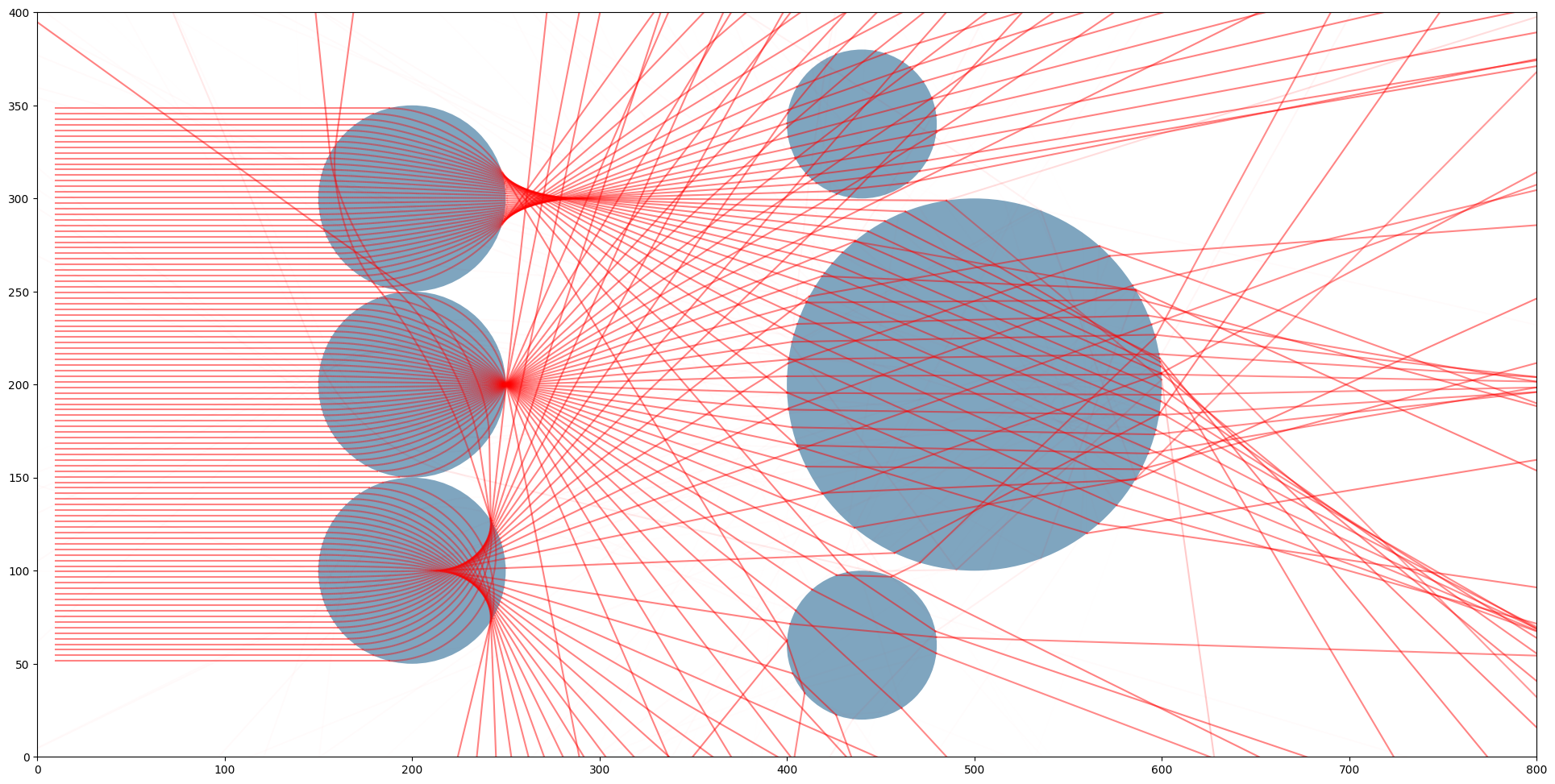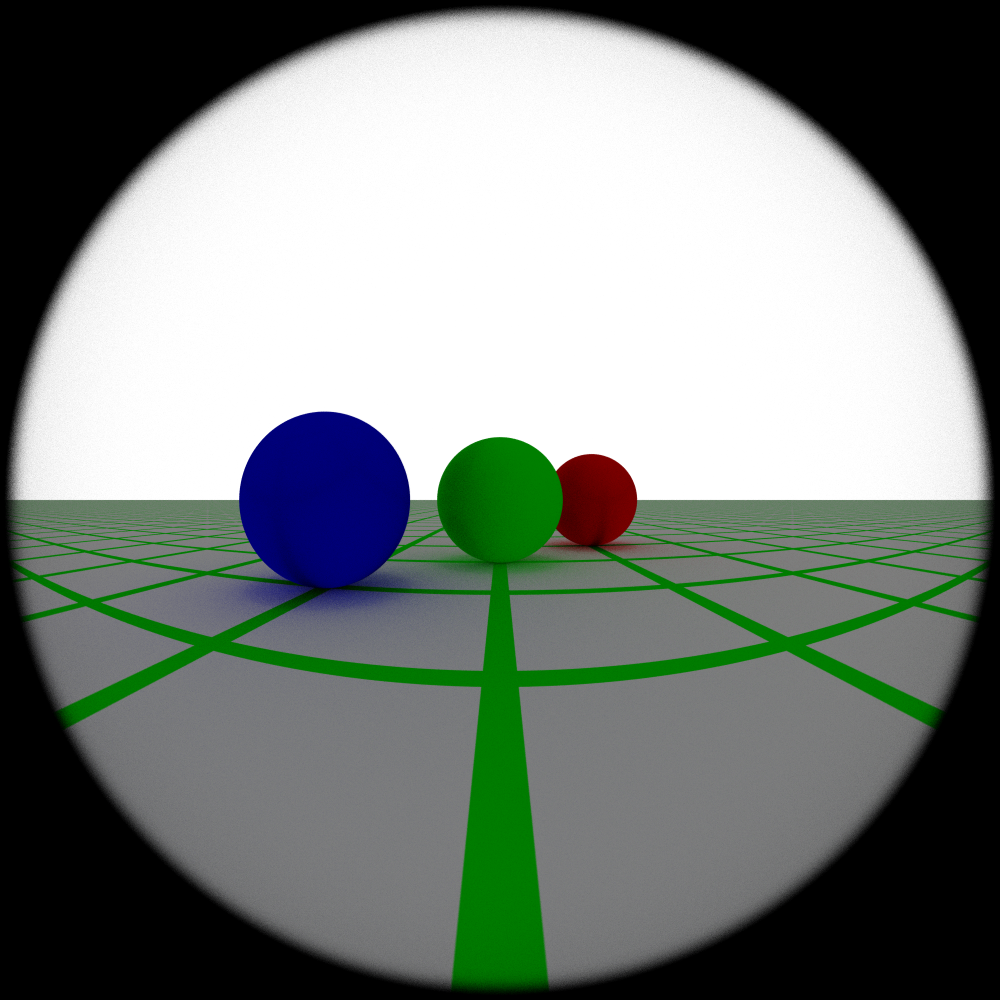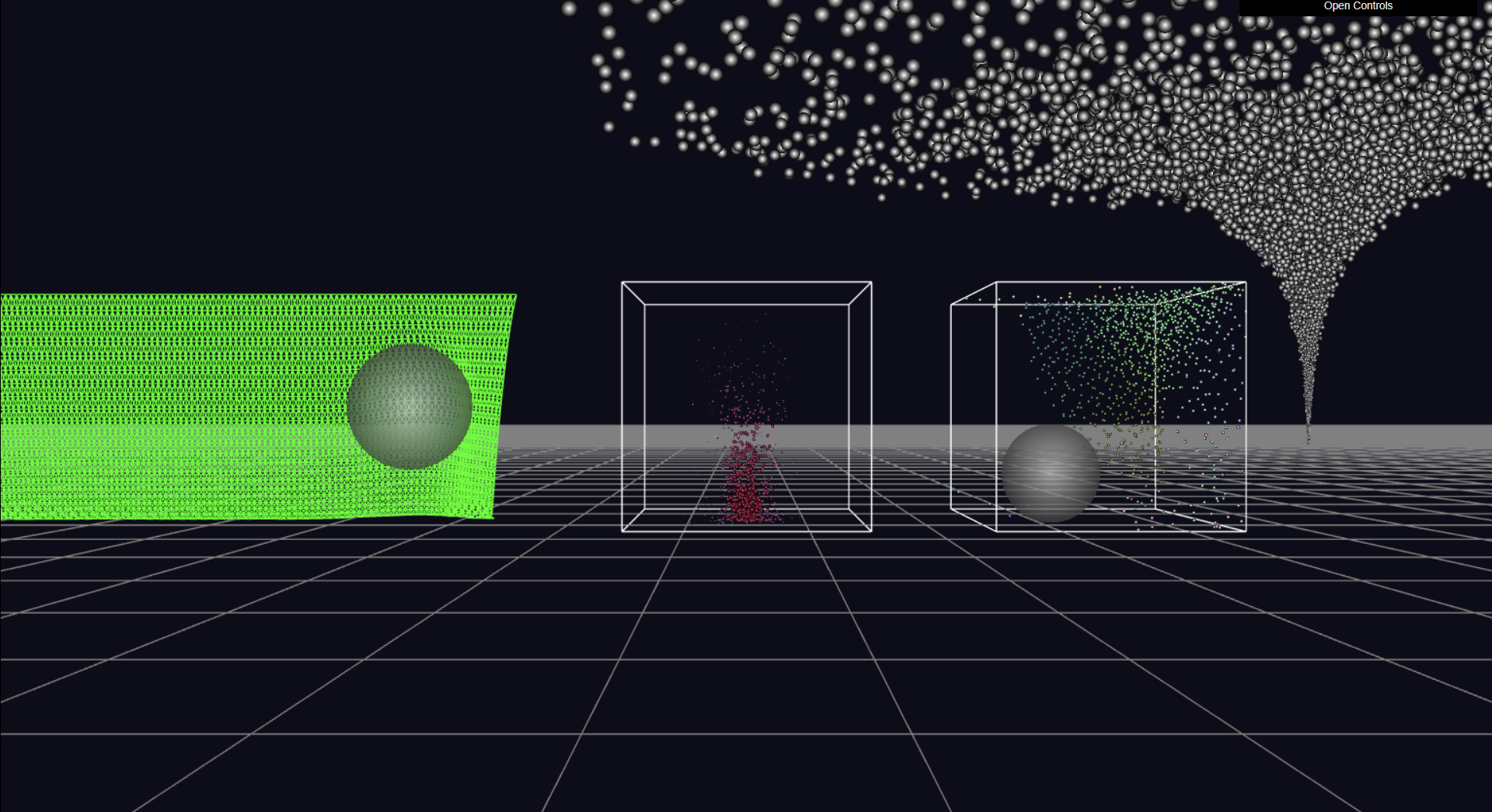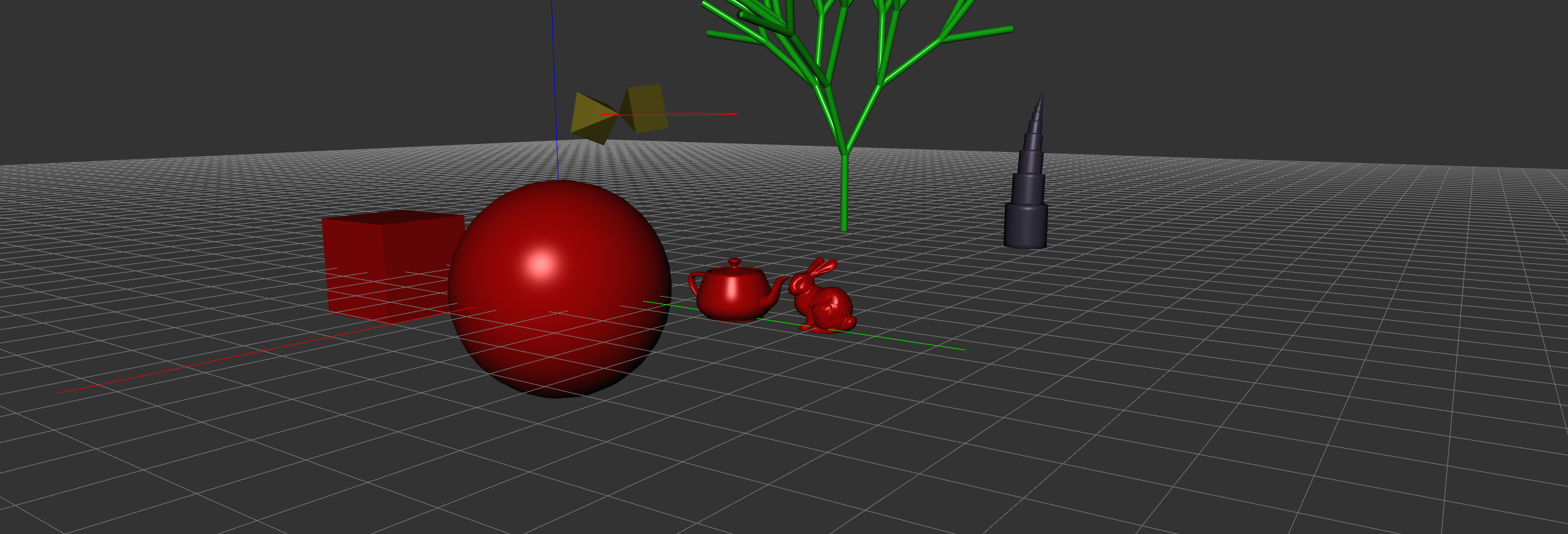
2D Ray Tracing in Python with Continuous Refraction
This was the final project for a Computational Optics seminar completed in collaboration with Claire Paré. Made in a jupyter notebook with numpy and matplotlib, the first aim of this project was to create a simplified version of this 2D ray-optics simulator. The initial goal was to show the paths of light rays through transparent spheres with various indices of refraction and accurately model Fresnel effects to showcase how the amount of reflected and refracted light depends on the index of refraction and incoming ray angle....



